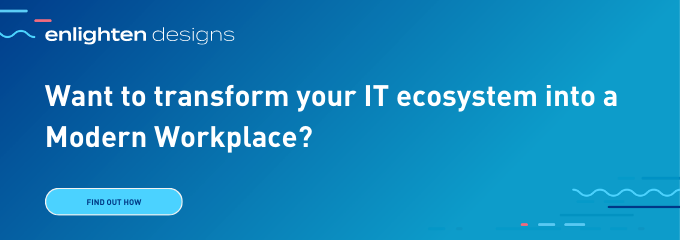In our previous blog post, we identified 3 key problems that can make IT change management difficult or unsuccessful. What steps can leaders take for for effective IT change management to pan out?
1. Use Culture to Create a Vision
Your employees need to embrace a vision for the upcoming changes, and leadership must create this vision. The best vision-casting will come out of the existing company culture and incorporating it into the change initiative. For instance, if the company culture values collaboration, the vision should be cast in a collaborative group setting. Employees should be asked to discover the vision together as a part of their team’s work. It will be so much easier to get buy-in and follow-through on changes when employees see them as consistent with the existing values and culture of the company.
2. Begin With C-Suite and Involve Everyone
Company leadership, beginning at the top, needs to model the expected changes for the rest of the employees. Expecting employees to do what leaders don’t is a sure way to breed resentment and derail change. Whether it’s a new procedure or a whole new management style, modelling by C-suite executives shows that change is essential for everyone and that it will permeate the entire company and culture.
3. Encourage Questions & Feedback
It is best to have an open process that encourages and expects questions and feedback. This will show that leadership understands how hard change is. It will also help employees to take ownership once their questions have been answered and their feedback seriously considered.
Questions and feedback will increase collaboration, a vital part of the change process. If employees can participate in the change process, they are more likely to embrace it, and hence, it is more likely to succeed.
4. Keep Employees Engaged and Committed
It is not enough to demand change from the top. Companies should be flexible and accommodating to get employees to embrace it.
Employees who are engaged with your company and committed to making change happen are most likely to make it all succeed. Once employees believe that the change is the best thing for them and the company, they will make it happen. The ambivalence and distance many employees feel as change is initiated is why two out of three change initiatives fail.
5. Redesign Systems to Align with Changes
Often. most change initiatives will not work without redesigning the current systems in a company. These can be related to software, hardware, procedures, or the general ways of doing things.
Looking at the systems currently in place before initiating change can help to increase the chances of successful change management. It is also possible that the redesign can happen as changes take place.
When employees begin to buy into the change model, they will come up with ways to make it work even better. If leadership is open to this feedback and will act on it even in the midst of change, the process accelerates and a positive change spiral takes place.
6. Assess Changes and Adapt
Once the change has gone through its initial implementation, it’s time to assess what has happened and make adjustments where possible. No change initiative ever goes perfectly; there are always aspects that go well and some that do not.
This evaluation process is critical to change management. It is only possible to determine success or failure by thoroughly evaluating the change management process. Then, building on successes will see the process through to its best implementation.
Successful Change Management
The success of 'change' can be measured in tangible and intangible ways, depending on the needs and priorities of the company and its leadership. Successful change management occurs when changes are adopted and begin to work in the ways company leadership envisioned when they first planned it. A great deal of data is now available to companies with the right software, but employee happiness and satisfaction can be more subtle and harder to define. While end results are one way to measure the success, other factors include the amount of employee buy-in and compliance, and the positive impact of the change on culture and overall company operations.
Some degree of change will be ongoing and never really stop. Therefore, flexible employees who can adapt to these changes will always be of great value to companies in helping them find their way into the future. Enlighten Designs understands the value of change in organisations. Talk to us to see how we can help your company embrace change and adapt.

